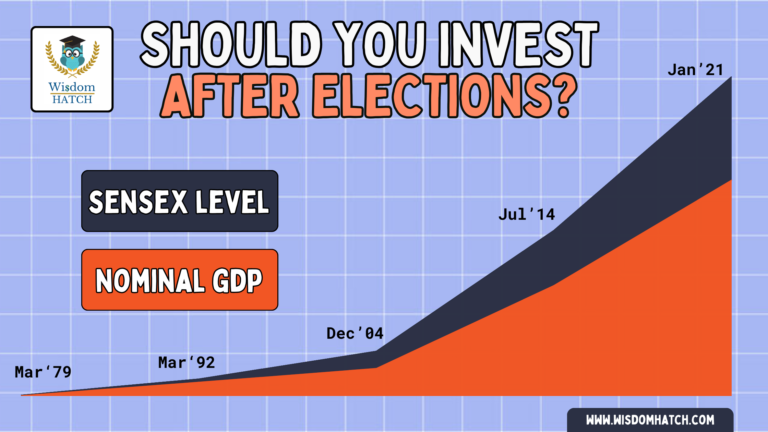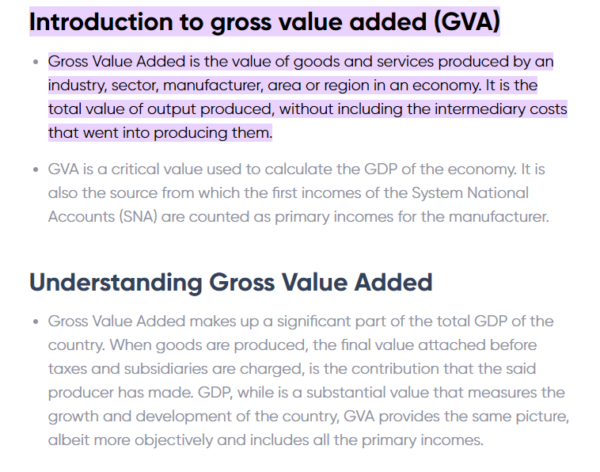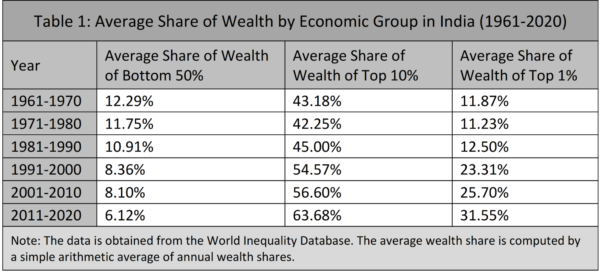Future of Indian Stock Market & the Reality Behind India's GDP

The Importance of Understanding Market Trends
Understanding market trends and economic indicators is crucial for making informed investment decisions.
The Indian Market Dynamics are likely to change quite dramatically over the next coming years.
The last year has been great for Indian Investors with Nifty giving around 30% run up in just one year.

But now a new set of question arises,
- Have we missed the rally?
- What are the options that we should look out for?
- What major triggers are left in the market?
- What happens Post Elections?
- Will India continue to give these types of returns?
In this blog, we will delve into the current market outlook and the reality behind India’s GDP.
While some parts of the information may seem technical, we will break it down in simple terms to make it easily understandable for everyone.
The Key Factors Affecting the Market
Currently, the market is hovering around 22,500 Nifty and is approaching the psychological level of 25,000.
This might happen in the next 6 months (or might take more time), but that’s the short term outlook.
This year, it is anticipated that this level will be broken due to several key factors.
So what exactly are these triggers?
Reason 1: Interest Rate Cut
An interest rate cut is expected, which will stimulate economic growth and make the market more bullish.
This will create favorable conditions for investors.
Take a look at the US FED Interest rate chart from 2008-2016:

The interest rates were at near zero levels.
This meant that governments could take on debt at very low cost of borrowing, which boosts economic activity.
And therefore in this period the Indian Stock Market gave almost 370% return.

This happened again during the covid crisis, when interest rates were again cut down to near zero levels.
Currently we are at high interest rates of 6.5-7% in India, which when brought down will be a trigger for the stock market.
Reason 2: India Election
The upcoming India election is predicted to be won by the existing government.
If this happens, this is again good news for the market since the markets prefer certainty and stability.
Reason 3: US Election
The US election also plays a significant role in the global market, including India.
As the US dollar is the reserve currency of the world, any changes in the US market will have a substantial impact on India’s economy.
Therefore, the outcome of the US election will influence the Indian market.
Great, there is a possible rally in the short term.
But what will happen post elections?
Once all these triggers play out and the market has given a rally, things will start changing.
There will be no more incentives to drive the market.
No Major Trend.
No Major News.
So then what?
The Markets will move as per the Fundamentals of the Economy.
What are the Fundamentals?
Problem 1: The Discrepancy in India's GDP Data
India’s Real Growth is what will matter.
Ie: If India’s GDP is truly going up,
If productivity and growth continues.
Then the markets will continue making new highs.
But what if it does not?
There will likely be a correction.
But note that its very much possible that the government intervenes and puts this off by a few more years.
Now, the major question to ask will be:
Is the GDP actually growing?
As per recent data,
India’s GDP growth is around 8.4%.
This is a big number.
But here are the facts:
• Despite the high GDP growth rate, India continues to face significant challenges in terms of unemployment.
- Approximately 800 million people, almost 50% of the population, rely on government subsidies for basic necessities.
• Additionally, the savings to GDP ratio has hit a five-decade low, indicating a lack of financial security among a large portion of the population.
There is a mismatch here.
Let’s take a deeper look.
How is GDP Calculated?
GDP is calculated primarily through 3 methods
- Output
- Input
- Expenditure
Ideally they should all come at a similar range.
The Output and Expenditure method are more popular.
The Output method primarily deals with finding the primary sectors that contribute to a nations growth.
And using them to calculate the GDP of the country as shown below:

The Expenditure method calculates the GDP using values such as Public Expenditure, Private Expenditure, Gross Value Add and so on.

Now without going too deep into the specifics, If we take the first and third method,
The discrepancy (difference in the 2 methods) was:
- 3.4% in 2022-23
- 2.8% in 2023-24
This is a 6.2% rise in GDP discrepancy.
Which raises questions about the reality of these numbers.

As per an article (shown above), Prof Arun Arun Kumar raised the same issue.

Problem 2: GDP vs GVA Mismatch
Second key problem is around the Gross Value Add (GVA).
In simple terms, GVA is the total value of output product without including intermediary costs.
(Avoids double counting).

Technically, GVA is considered a better metric than GDP in determining a nation’s growth.
But the GDP and GVA should not be too far apart, which is not the case in India.
GDP in India ~ 8%
GVA in India ~ 6.5%
Taking a different look at what GVA is,
GVA = GDP + subsidies on products – taxes on products
In India,
- Taxes are going up
- Subsidies are going down
This shows a trend of decreasing GVA.
India’s Plan of Action
So now what does the road forward look like.
Let’s take a final look at GDP,
GDP includes Private Expenditure and Public Expenditure.
Over the last few years, private expenditure has come down while public expenditure has gone up.
Now all tehse public expenditure adds to the country’s GDP, but not necessarily to its GVA (Productive Expense).
This is one of the core problems.
Now how does the government finance these expenditures?
- Loans (Deficit)
- Taxes
In the recent budget, India announced that their current fiscal deficit (Income – Expenditure) is 6.5%.
And they want to bring it down 5.1% in the next 2-3 years.

While Private Consumption can’t be predicted yet,
This means that Public Expenditure will be brought down.
And given that post Elections the incentives for the government to keep spending will decrease, this seems likely.
The Link Between India's GDP and the Stock Market
The GDP and the Stock Market have a strong correlation.
This may not apply to all countries, but it does apply to India.
Over the long term, the trend will be similar.
This is simply because the performance of the Nifty 50 is driven by the top 50 companies in India.
These same companies will be contributing to the GDP growth of the country.

So if the GDP growth slows down, the stock market growth will also take a hit.
The Impact on Stock Market Decisions
So what can you do?
Keep these key points in mind:
1. Wealth Inequality will continue to grow

- The top 1% held 31% of India’s wealth uptil 2020.
- This will continue to grow.
2. Invest in companies that cater to the luxury segment or to the rich people.
- Small business will continue taking hits over the next few decades.
- We can expect massive monopolization across all industries in the same period.
3. Avoid Public Sector Companies
- As the Public Expenditure comes down, these companies will not perform well.
4. Expect consumption to pick back up
- This is likely to happen once interest rates are cut and liquidity goes up again
5. Private Banks are likely to outgrow
- This applies to all institutions that deal with credit.
- As seen in the graph below, Finance sector is one of the fastest growing in India.

Conclusion
While the current market outlook appears positive, it is crucial to consider the underlying factors influencing the market, such as GDP growth and wealth disparity.
Ultimately it’s your money.
And you need to gather information and come up with your own hypothesis.
And design your portfolio accordingly.
- Understanding market trends and economic indicators is vital for informed investment decisions.
- Indian market dynamics are changing, with recent significant gains.
- Key questions arise about missed opportunities, future triggers, and post-election scenarios.
- Anticipated triggers include interest rate cuts, Indian and US elections.
- The discrepancy in India’s GDP data and GDP vs. GVA mismatch raise concerns about actual growth.
- The government’s fiscal policy and expenditure affect GDP and market performance.
- Wealth inequality and trends suggest focusing on luxury sectors and avoiding public sector companies.
- Expect consumption to rebound post-interest rate cuts, with private banks likely to outgrow.
- While the current market outlook seems positive, understanding underlying factors is crucial for portfolio design.
Ever wondered what we get in return for the taxes we pay in India. Whether the Tax Structure is TOXIC? Check out our Blog post on HEAVY TAXES, But we get NOTHING in return
MUST know BEFORE you become an Airbnb host
Medium Article Preksha Chand edit post MUST know BEFORE you become an Airbnb host Medium Article Preksha Chand edit post MUST know BEFORE you become an Airbnb host Medium...
Make more money from your property: Short-term rental [Airbnb]
Medium Article Preksha Chand edit post Make more money from your property: Short-term rental [Airbnb] Medium Article Preksha Chand edit post Make more money from your property: Short-term rental...
GOA Airbnb Laws: What Hosts Need to Know [2024]
Medium Article Preksha Chand edit post Make more money from your property: Short-term rental [Airbnb] Medium Article Preksha Chand edit post Make more money from your property: Short-term rental...



